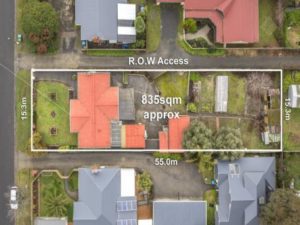In the realm of construction and real estate development, the foundation for success is often laid long before the first brick is laid or the architectural plans finalised. This foundational step is known as a feasibility study, a comprehensive assessment that determines whether a proposed building project is viable and worth pursuing. So, why exactly do building developers conduct feasibility studies, and how do they go about it? Let’s delve into the significance and methodology behind this crucial process.
Why Conduct a Feasibility Study?
- Assessment of Market Demand: Before embarking on a building project, developers must gauge the demand for the proposed property. A feasibility study helps identify market trends, assess competition, and understand the needs and preferences of potential buyers or tenants. This insight is vital for ensuring that the project meets market demand and stands a good chance of success in the long run.
- Financial Viability: Building projects entail significant financial investments. A feasibility study provides developers with a clear understanding of the project’s financial feasibility, including cost estimates, revenue projections, and potential returns on investment. By conducting a thorough financial analysis, developers can make informed decisions about whether the project aligns with their financial goals and risk tolerance.
- Risk Mitigation: Every building project carries inherent risks, ranging from regulatory hurdles to construction delays and economic downturns. Feasibility studies help developers identify and assess these risks early on, allowing them to develop risk mitigation strategies and contingency plans. By anticipating and addressing potential obstacles, developers can minimise the likelihood of costly setbacks and project failures.
- Resource Allocation: Building projects require a diverse range of resources, including land, materials, labor, and capital. A feasibility study helps developers evaluate resource requirements and allocate them effectively to maximise efficiency and minimise waste. By optimising resource allocation, developers can enhance project outcomes and improve their competitive advantage in the market.
- Alignment with Strategic Objectives: Feasibility studies ensure that building projects align with the developer’s overarching strategic objectives and long-term vision. By assessing factors such as location, design, target market, and project scale, developers can ensure that the project contributes to their business growth and sustainability goals.
How to Conduct a Feasibility Study
- Market Analysis: Start by conducting a comprehensive analysis of the local real estate market, including supply and demand dynamics, demographic trends, economic indicators, and competitive landscape. This analysis will provide valuable insights into market conditions and help inform key decisions throughout the feasibility study process.
- Site Evaluation: Evaluate potential building sites based on factors such as location, accessibility, zoning regulations, environmental considerations, and infrastructure availability. Assessing the suitability of the site is critical for determining the feasibility of the project and identifying any potential constraints or challenges.
- Financial Modelling: Develop detailed financial models to estimate the project’s costs, revenues, and profitability over its lifecycle. Consider factors such as land acquisition costs, construction costs, financing expenses, operating expenses, and projected income from sales or leasing. Conduct sensitivity analyses to assess the impact of various assumptions and scenarios on financial performance.
- Risk Assessment: Identify and analyse potential risks and uncertainties that could affect the success of the project. This includes regulatory risks, market risks, construction risks, financial risks, and external factors such as economic downturns or natural disasters. Develop risk mitigation strategies and contingency plans to address these risks effectively.
- Stakeholder Engagement: Involve key stakeholders, including investors, lenders, architects, engineers, and local authorities, throughout the feasibility study process. Seek input and feedback from stakeholders to ensure that their perspectives and concerns are taken into account and that the project enjoys broad support and alignment.
- Documentation and Presentation: Document the findings of the feasibility study in a comprehensive report that outlines the project’s objectives, methodology, findings, assumptions, and recommendations. Present the findings to stakeholders in a clear and compelling manner, highlighting the project’s strengths, opportunities, and potential risks.
- Decision Making: Use the findings of the feasibility study to inform decision-making regarding whether to proceed with the project, modify the project scope or design, seek additional funding or partnerships, or explore alternative development opportunities. Make informed decisions that align with the developer’s strategic objectives and risk appetite.
In summary, feasibility studies are a critical step in the building development process, providing developers with valuable insights into market demand, financial viability, risk mitigation, and resource allocation. By conducting thorough analyses and engaging key stakeholders, developers can make informed decisions that maximise the likelihood of project success and deliver value to all stakeholders involved.



